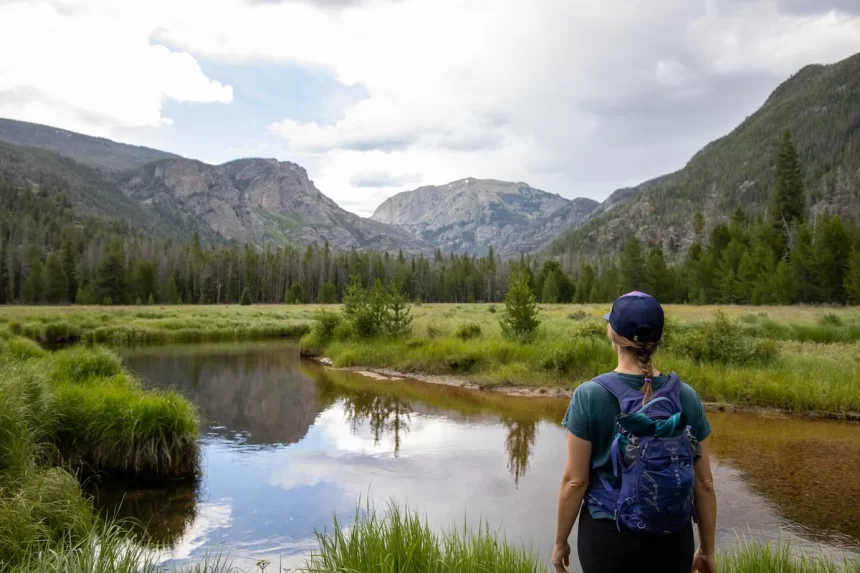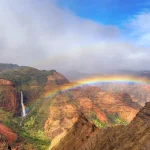Have you ever dreamed of standing in awe of the towering peaks of Yosemite, gazing at the Milky Way in Arches, or marveling at the vibrant hues of Bryce Canyon? Does the thought of the costs—entry fees, lodging, and travel—make you think twice about embarking on these adventures? I’m here to tell you that visiting America’s national parks on a budget is not only possible, but it’s also easier than you think!
In this guide, we’ll explore some budget-friendly national parks, share insider tips for cutting costs, and empower you to plan an adventure that fits your wallet. Let’s turn your dream of exploring these natural wonders into an affordable reality!
Discovering Hidden Treasures: Budget-Friendly National Parks
Some national parks are renowned for their breathtaking beauty but also come with higher costs due to popularity and demand. However, there are plenty of incredible parks that won’t strain your budget while offering equally stunning experiences.
- Great Smoky Mountains National Park (Tennessee and North Carolina): This park tops the affordability list with free entry year-round! With its mist-covered mountains, scenic drives, and historical sites, you’ll find endless adventures for zero dollars at the gate.
- Badlands National Park (South Dakota): For just $30 per vehicle, you can roam surreal landscapes filled with layered rock formations and fossil beds. Nearby camping options are reasonably priced, making it an excellent choice for budget-conscious travelers.
- Congaree National Park (South Carolina): Love kayaking or hiking through unique ecosystems? Congaree offers a magical experience in its swamplands, and the best part? There’s no entrance fee!
- Saguaro National Park (Arizona): This desert gem costs only $25 per vehicle and immerses visitors in a world of towering cacti and fiery sunsets. It’s a photographer’s paradise without the hefty price tag.
Money-Saving Tips for Your National Park Adventure
1. Leverage Free Entry Days
Each year, the National Park Service designates several free entry days. Plan your visits around dates like:
- Martin Luther King Jr. Day
- National Park Week (in April)
- National Public Lands Day (in September)
- Veterans Day
These days allow you to experience even the most expensive parks at no cost.
2. Opt for the Annual Pass
For $80, the America the Beautiful Pass grants unlimited access to over 2,000 federal recreation sites, including all national parks. If you plan to visit three or more parks in a year, this pass will likely save you money. Bonus: Seniors, military members, and people with disabilities are eligible for discounted or free passes.
3. Affordable Accommodations
- Camping: National parks often have campgrounds starting as low as $10 per night. Book early to secure your spot, especially during peak seasons.
- Backcountry Permits: For those seeking solitude, backcountry camping is typically the cheapest option. Ensure you’re aware of permit requirements.
- Stay Outside the Park: Accommodations just outside park boundaries, including budget motels and vacation rentals, can save you significantly compared to in-park lodges.
4. Transportation Hacks
- Carpool: Split costs with friends or family, especially in parks that charge per vehicle.
- Shuttle Services: Many popular parks, like Zion and Yosemite, offer free or low-cost shuttle services. These not only save money but also reduce environmental impact.
- Drive Smart: If you’re road-tripping, pack snacks and use gas price apps to find the cheapest fuel stops.
5. Eat Like a Local
- Bring your own meals and snacks to avoid overpriced park restaurants.
- Check out farmers’ markets near the park entrances for fresh, affordable produce.
- Embrace the charm of a picnic with million-dollar views—it’s far cheaper and more memorable than dining out!
Timing is Everything
Traveling during the shoulder seasons (spring and fall) is a smart way to reduce costs. These periods typically have:
- Fewer crowds, meaning less competition for campsites and parking spots.
- Lower lodging prices in nearby towns.
- Milder weather, perfect for hiking and outdoor activities.
Gear Up Without Breaking the Bank
If you’re new to camping or hiking, there’s no need to spend a fortune on gear.
- Borrow or Rent: Ask friends or family to lend you equipment, or check out rental options at outdoor stores.
- Shop Secondhand: Thrift stores and online marketplaces are goldmines for budget-friendly outdoor gear.
Don’t Miss the Free Activities
Many parks offer free or low-cost activities that enrich your visit:
- Ranger-Led Programs: From night sky stargazing to wildlife talks, these are often free and enhance your understanding of the park.
- Junior Ranger Programs: Perfect for kids (and fun for adults too!), these free activity booklets make the experience interactive and educational.
A Budget-Conscious Packing List
Here’s what you’ll need to save money and ensure a smooth trip:
- Reusable Water Bottles: Most parks have refill stations, so there’s no need to buy bottled water.
- Cooler and Snacks: Keep your food fresh and avoid costly convenience store stops.
- Park Map and Guide: Download maps and itineraries in advance to save on printed materials.
Make Memories That Last a Lifetime
Exploring national parks doesn’t have to be expensive—it just requires a bit of planning and creativity. Picture yourself watching the sunrise over the Grand Canyon, hiking through the lush forests of the Pacific Northwest, or spotting bison in Yellowstone, all without stressing over your budget.
What’s stopping you from taking the first step toward your adventure?
Share Your Story
What’s the #1 national park on your bucket list for 2025? Do you have a secret tip for saving money while exploring the great outdoors? Let’s dream and plan together! Drop your thoughts, goals, and travel tips in the comments—I can’t wait to hear from you.
Adventure is calling, and your budget won’t hold you back! 🌲✨




